Easy Embossed Moleskine
Intro: Easy Embossed Moleskine
Like many people, I always carry a notebook around with me to keep my ideas and notes in one place. Unfortunately, most notebooks tend to look the same and can sometimes get mixed up when I'm at a meeting with other creative types who have a similar notebook to mine. Instead of stickers, customizing your notebook with an embossed pattern is super easy and looks very professional.
Making your own custom embossed notebooks takes only a few minutes, and makes great gifts for that creative person in your life (even if that person is you).

Ready to make your own custom embossed notebooks? Let's make!
STEP 1: Supplies
This technique can work on a whole bunch of notebooks that have a hardcover with a soft wrap. Probably the most common type is Moleskine, which is what I used. Here's what else you'll need:
- Hardcover Moleskine notebook
- Letterboard letters (almost any letting type that is stiff will work)
- Blue tape (or any non-sticky tape)
- Bar clamps
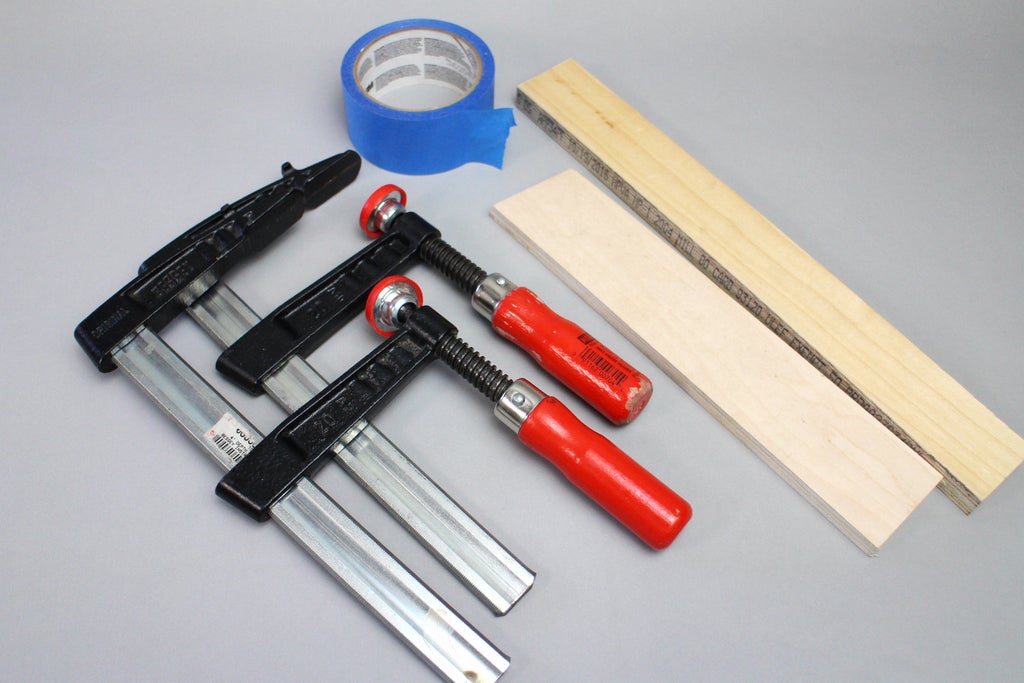
STEP 2: Letter Modification
The letters will be pressed into the Moleskin cover oriented legibly. The letters I used were designed to be mounted on a board with slats, so had small spurs on the back of each letter that would have to be removed.
Depending on what type letters you find, you might be able to skip this step.


The spurs on the back side of each letter was cut off, then the entire back was sanded smooth using 120 grit sandpaper.
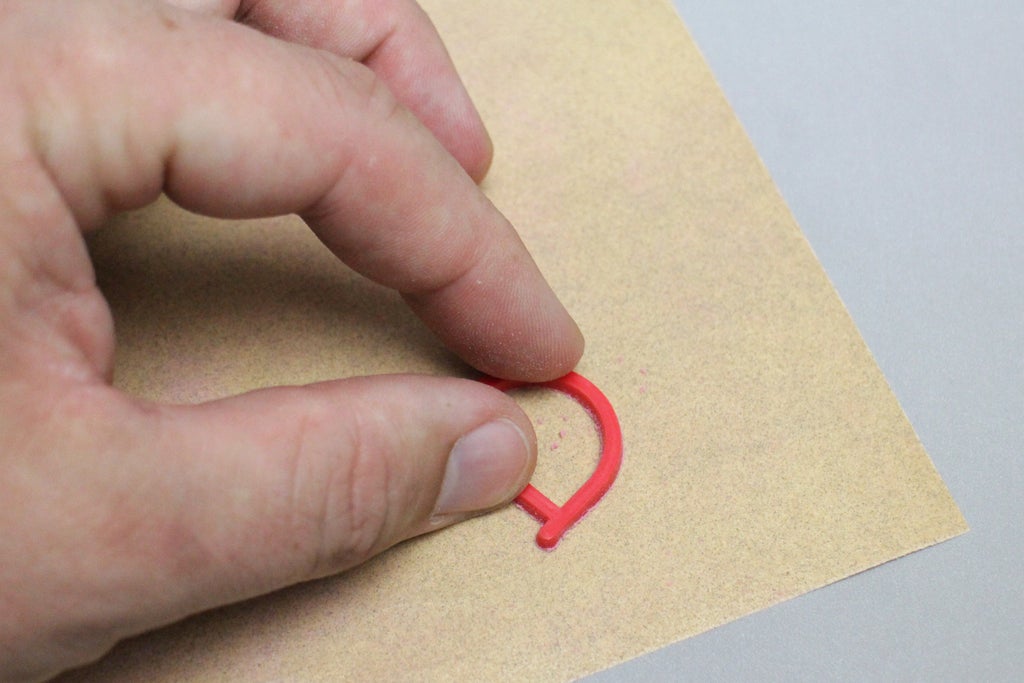
After a few seconds of sanding a letter inspect your work, it should be easily noticeable where the high and low spots are. Keep sanding until you have a smooth and consistent back of the letter.
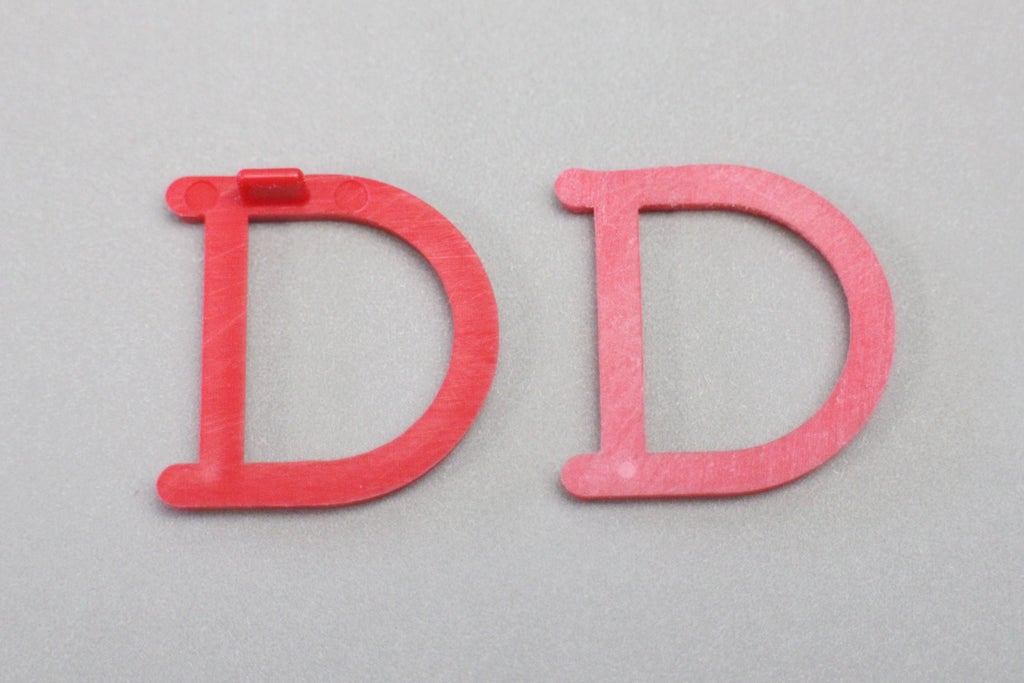
Having a smooth backside to each letter will give you consistent and crisp letters when they're embossed.
STEP 3: Letter Placement
To keep the most pressure on the letters when clamping I recommend doing one word at a time. Place your word wherever you like on your notebook. To help keep things lined up neatly I slide the straight edge of my scrap wood to push the letters down the notebook into place, leaving them all level with each other.

Once the letters are in place a small section of wide blue tape is used to hold the lettering in place.
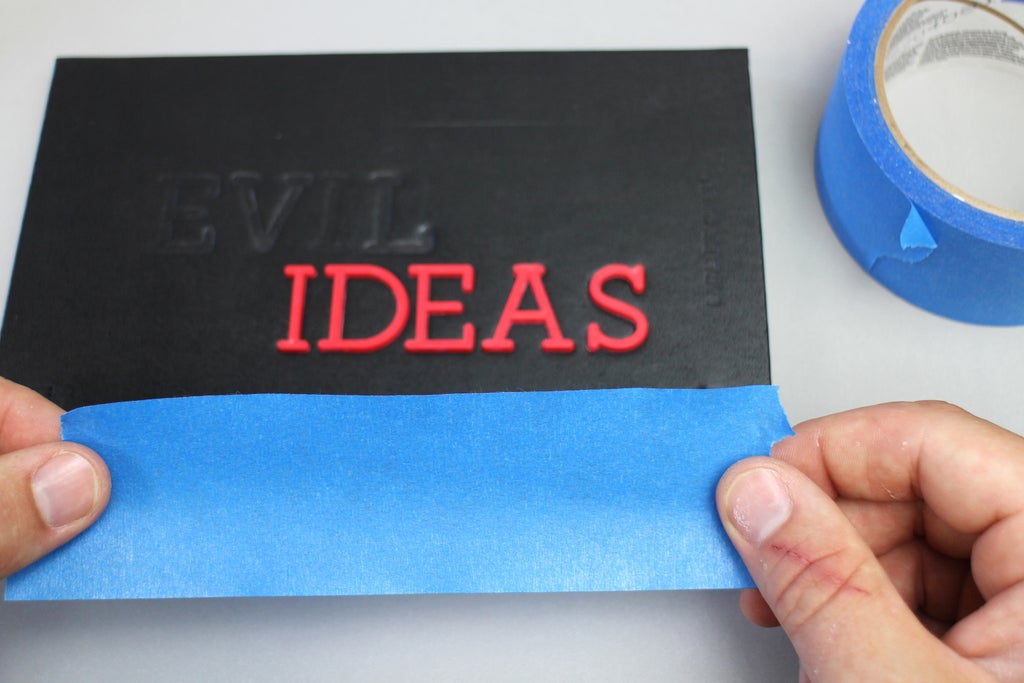
Having the letters move while you're trying to get the clamps in place is frustrating, so don't skip this part.
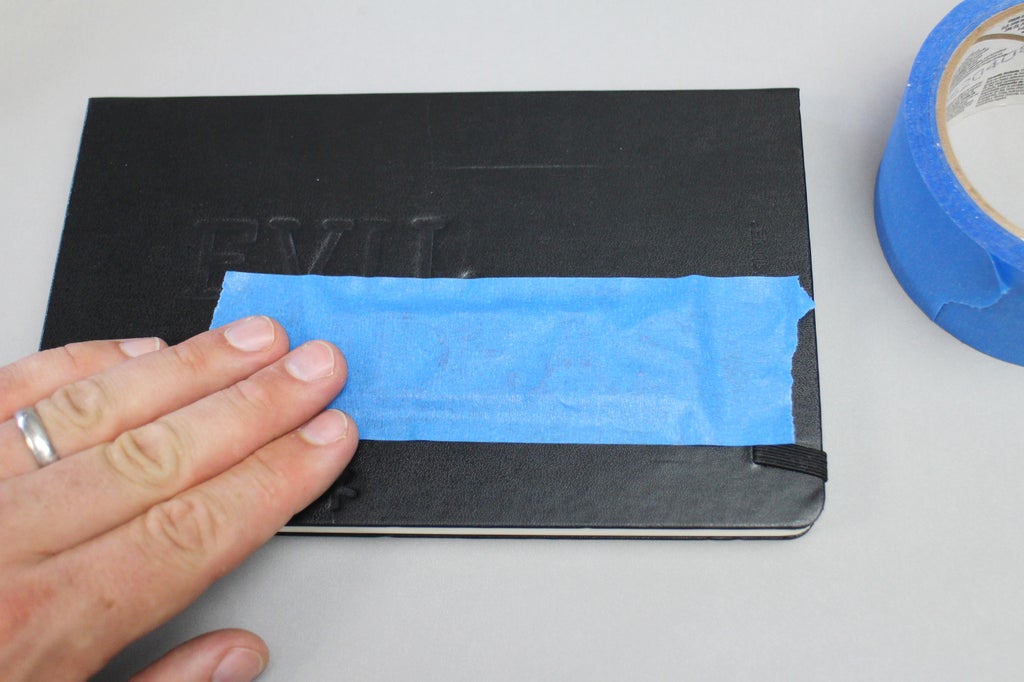
Smooth down the tape over each letter and along the sides.
STEP 4: Start Squeezing!
Open the notebook cover and place one scrap piece of wood on the underside of the cover, directly under the lettering. Place the second piece of wood over the lettering. The wood will help distribute the clamp pressure and protect the book from any clamping damage, leaving only the letters embossed.

Secure the notebook and scrap wood sandwich with one clamp over the letters, and gently tighten the clamp so it's held in place on its own. Move a second clamp into place and tighten it down as far as you can make it go, then move back to the first clamp and tighten that one completely.
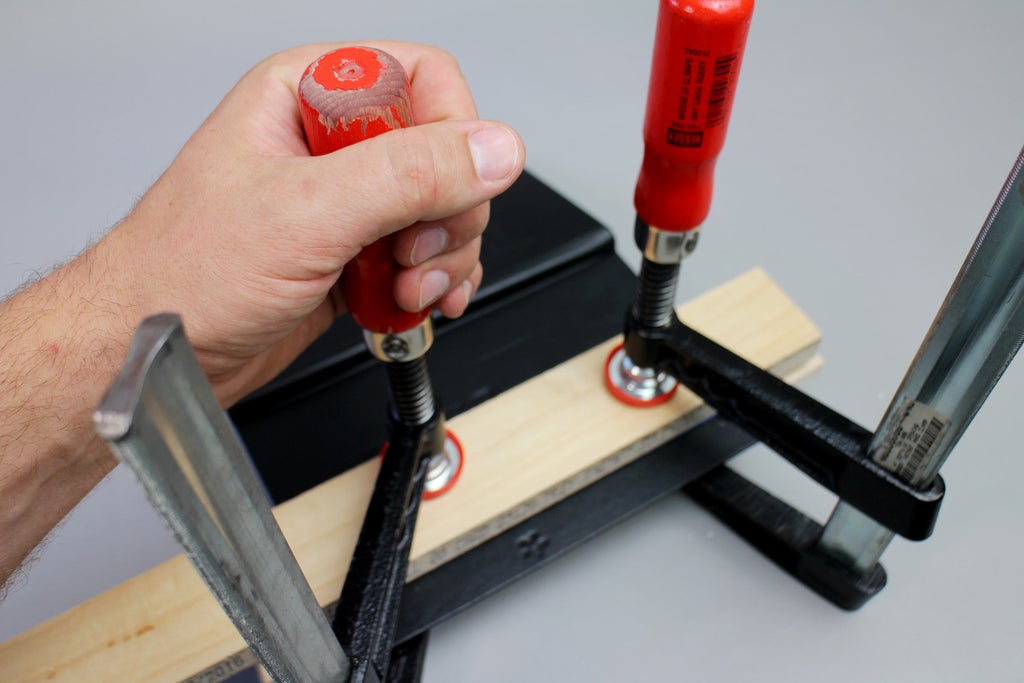
It's important to get the clamps as tight as possible, applying the maximum amount of pressure to the letters and embossing the notebook. Be mindful of the size and quantity of your lettering, as larger and more letters means more pressure will be needed to get a good embossing.
Leave the letters clamps for about 10 minutes.
STEP 5: Peel Back
Release the clamp pressure on the notebook and peel back the tape holding on the lettering. If you're careful when peeling back the lettering you can peek underneath the tape and see if your embossing is deep enough to your liking without losing the registration. If your embossing isn't as deep as you like just lay the tape back down on the notebook and register the letters back into where you had them. Then, clamp again, ensuring very tight pressure.
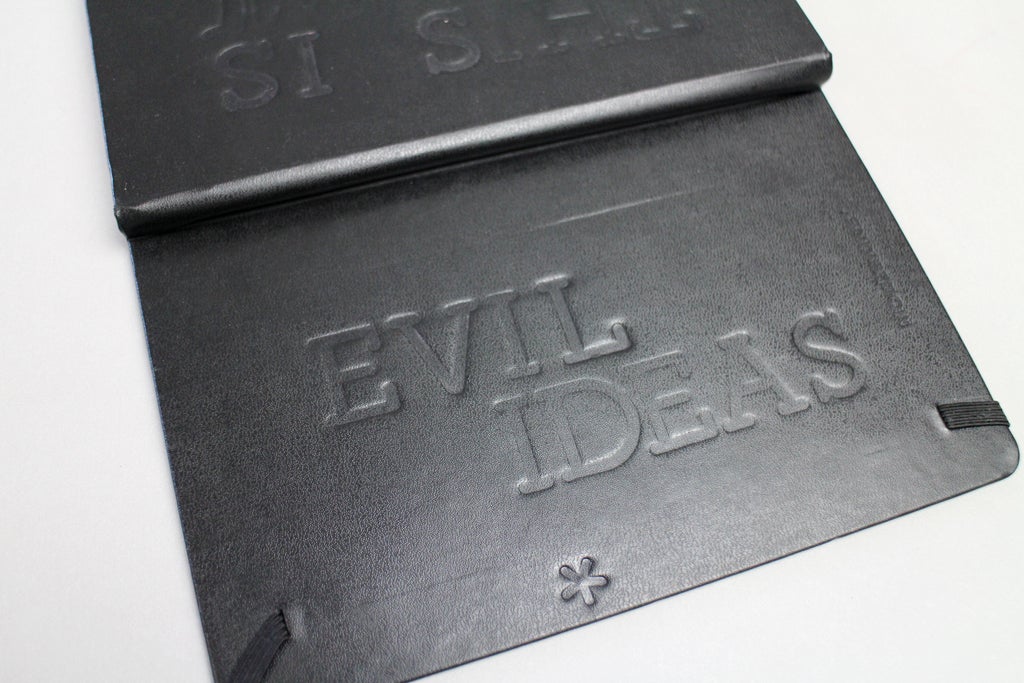
When you're lettering is embossed you can discard the tape, but save the lettering for reuse. Clean any tape residue with a damp cloth.
STEP 6: Go Forth, and Be Awesome!
There's no limit to the combinations you can create with this technique. Working in small letter batches gives the deepest impressions, and the best results. So go slow, and clamp down tightly!
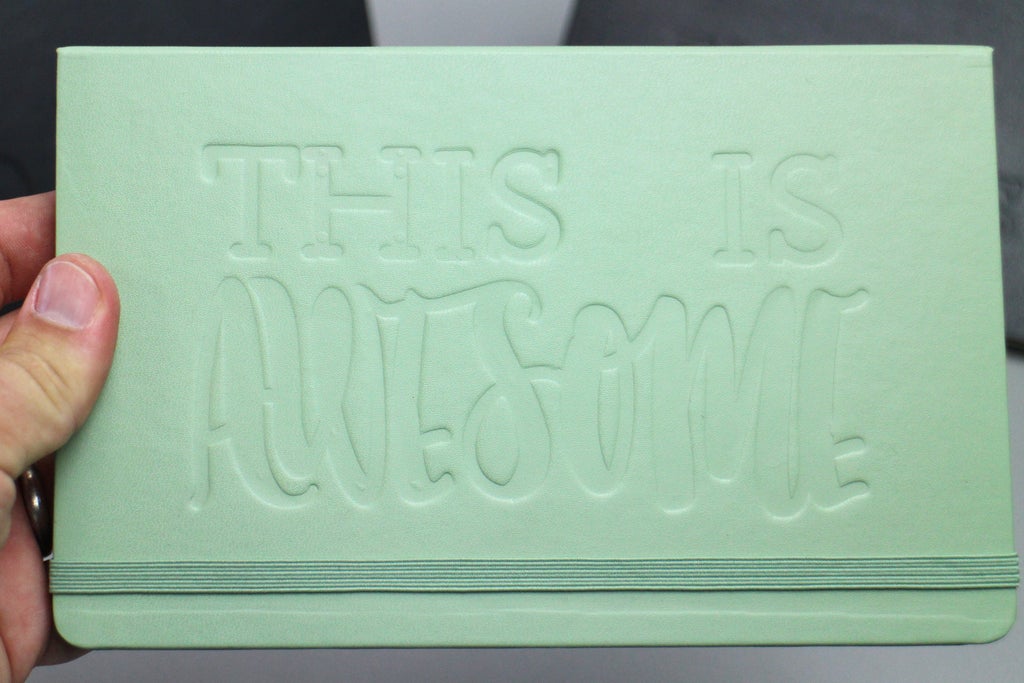
These notebooks make great personalized gifts, or just a great way to customize your own notebook and be the envy of everyone else!
Happy making! :)
Have you made your own embossed notebook using this technique? I want to see it!
Happy making :)
14 Comments
hilabuskila 2 years ago
mikeasaurus 2 years ago
jeanniel1 6 years ago
What a great idea! I can do this with foamy stuff, too, or anything soft that can hold the shape afterwards. LOVE it!
depotdevoid 6 years ago
Hey wow that's awesome! How long does the embossing last? Is it permanent?
mikeasaurus 6 years ago
Yes, totally permanent!
depotdevoid 6 years ago
Huh, very cool! This may end up being my home made Christmas gift to various relatives this year. I could even 3D print designs if I get ambitious!
cfuse 6 years ago
Long ago when I was doing printmaking a huge portion of my work was embossing. Here's some thoughts on the subject:
If there's some way to make the material temporarily more pliant (in my case, wetting the paper) during the embossing it will give a better result. I doubt that water would work here but heat might. I'd hit it with a heat gun and see what happens.
Be very careful about the edges of your stamp (and the material you use for the stamp makes a huge difference here). Pressure plus hardness plus an edge equals cutting. In an example like this the cover of the book could be ruptured if serious pressure was used during the embossing. There are also aesthetic elements to the type of edge on the stamp - The angle and whether it is rounded off or not, etc. Travel distance in the stamp is an issue also. The taller the stamp the bigger the risk that you're going to cut or tear your target material.
Whilst much in embossing is material dependent the basic rule is that the less pressure you have the longer it's going to take. I did my embossing on a printing press - and that's significantly more than the force you could get out of even the biggest clamps. Mechanical presses also benefit from even application of pressure. It didn't take me ten minutes and I could have probably done a book like this in about 5 seconds. If you are going to do a lot of embossing then I recommend you consider spending money on some good tools - they aren't cheap but the time savings (especially when you're making more than one of something) are considerable.
When you are embossing something what you're really doing is printing without ink. This leads into a logical thought: why not consider adding pigment to the face of your stamp? Depending on the material and pressure embossing can also act as a bonding agent to glue different materials together. There are many possibilities.
mike2z 6 years ago
Great instructable, thanks.
cfuse 6 years ago
That depends on the material. Anything that has elasticity is a poor candidate.
mikeasaurus 6 years ago
It's permanent. I have a moleskine that's 3 years old and the embossing looks the same as the day I pressed it. Make sure you squeeze those clamps extra tight!
MoRoToRiUm 6 years ago
I use the same technique for embossing leather. I do soak the leather some before hand to soften it up, and this aids in the results lasting longer. I use a metal necklace charm of a tree (I modified a little) as my makers mark, the possibilities are nearly endless.
I agree with Orngrimm, use a nice solid backer and spreader plate or board to provide even pressure and prevent unwanted marks. Great 'Ible!
subnet 6 years ago
Great idea, maybe better and less "dangerous" (for the book) than a laser engraver... thanks for sharing!
barista 6 years ago
Great job!
I have a 2 tonne hydraulic bottle jack and a 3D printer and thought about doing this on my Moleskines
Orngrimm 6 years ago
Be sure your board on the backside is covering as much of the backside as possible to prevent a bar embossed on the backside...